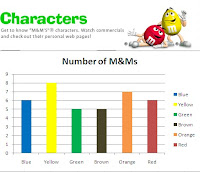http://www.zimmertwins.com/

This is a really fabulous and easy to use website that is highly interactive. It is a great site for students to enhance their ICT skills in that students are required to navigate their way around the site. They need to click on the Create Movie icon and then choose Make From Scratch. From there, they just select the icons/ scene aspects they wish to include to demonstrate the subject the movie is based on.
A good way to incorporate this ICT program into the curriculum, I believe, would be for students to demonstrate messages of value, such as respecting each other, the effects of bullying etc.
I would definitely use this program.
Next in today’s session, we were shown another program called dfilm.
There are many uses for this site. I had a very fun time making a movie using this program. Dfilm, is a movie-making program, similar to Zimmertwins and also easy to navigate around.
These are the steps you need to follow in order to create a really fun, interactive video.
- You can choose the setting of the scene
- Choose the characters
- Write in the dialogue between characters

- Add background music
- Give the movie a title
- Then send it to emails for others to view.
The movie I made was about a rendezvous between two people who were happy to see each other.
After much trying, unfortunately I have been unable to link the movie so that you can view it. Sorry everybody. Trust me, it was really cool!! Well, I enjoyed it anyway!
Here is the actual web address for your information anyhow.
http://www.dfilm.com/live/moviemaker.html
After testing it out, I would probably use this site, as well as the Zimmertwins site. I believe students can really use their imaginations to create this type of ICT movie, in which they can possibly use literacy stories and narratives and portray these in a digital format.
Now for the next site... it's called Build Your Wild Self!!!
http://www.buildyourwildself.com/

This site is great! Here's what you do. You use a heap of different cartoon characteristics to create an animalistic type figure to represent the self or another. It’s heaps of fun and very easy to navigate. Students in early years primary school will enjoy this program as it requires skills, however, the students do not have to have a great amount of ICT knowledge. All they need to do is click onto Build Your Wild Self and then go through all the many types of characteristics and create an imaginary self. Students may wish to do this to represent themselves, or characters from texts, or characters from their own narratives.
Wow, this tute has been intense. We have looked at so many different interactive programs that could be useful within the classroom. Reasonably clever is another site that students could navigate easily using ICT skills and have fun using their creative flairs. In this program, students use lego to apply characteristics of familiar characters from a variety of texts, which is highly engaging for students as lego is a very popular medium for play. Here is the site...
http://www.reasonablyclever.com/

Greg has now introduced us to another great site: http://www.sketchswap.com/
This site contains a program called sketchswap and it is a very fun and easy to use program. All you need to do is go onto the website and from their begin drawing in the space permitted, then you submit your drawing and a new drawing will appear for you. It is fun and interactive and would be a great ICT activity for students, especially to ehance drawing skills. Studemts would be interested and engaged in the anticipation of what the final drawing would look like.
This is the picture it created from my original drawing. It looks nothing like mine ha ha.

Well, it’s been a busy morning to say the least. I have taken away some very useful tips and program suggestions which will definitely assist me when I begin my teaching career. I will attempt to use all of the programs in my classroom.
Information Communication Technology has become such a big and important, not to mention, positive part of the contemporary primary school curriculum. Before starting this course unit, I had a very limited knowledge of ICT and its relevance and benefits within the classroom. Children today are technologically competent from a very young age as technology has grown to become a crucial part of their daily lives. It is important for me as a graduate teacher to have a sound knowledge of ICT and ways to incorporate this into my future classroom.
I have already applied knowledge I have gained from this unit, as whilst on placement, my class was studying Indigenous Australia for their integrated unit and I introduced the students to the Dust Echoes website, as they were required to create a Glogster. The students were very excited by the website and chose to link it to their Glogsters.
I plan to use many more of the programs introduced to me during this unit, as I have taken away a great deal from the sessions, and always want to enhance my own ICT skills and knowledge so that I can effectively enhance the skills and knowledge of my students.











